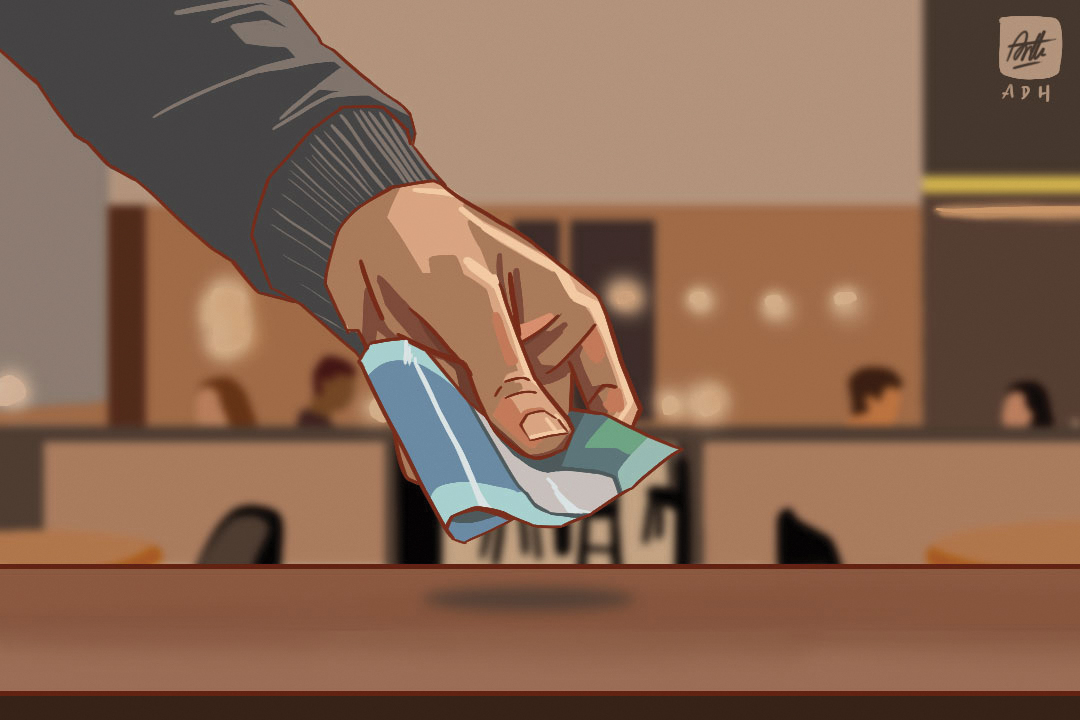Some people tip. Others don’t. Some tip to show gratitude. Others tip to avoid guilt. Some tip to avoid embarrassment. Others tip to follow social norms.
Motives for tipping vary, but the belief that tipping improves service persists. The better waiters serve, the more they get. It sounds logical that customers pay more to motivate waiters and improve their service.
Yet a study conducted by Cornell University shows that performing a magic trick at a table increased the overall tip of waiters serving there, even though they had done nothing additional in their service. Many factors unrelated to service, including race, sex, and age, influence the amount of tips that workers get. Studies have found that Black cab drivers are tipped less than white drivers and women Uber drivers under the age of 65 are tipped more than men Uber drivers.
Given that most customers in restaurants are not regulars, most of them will not benefit in the long term by tipping the waiter. In fact, a survey has found that only 14 per cent of people tip to avoid poor service in future.
Although quality of service does affect the size of a worker’s tip, this only accounts for a variation of less than five per cent. Because the size of the tip is weakly correlated to the quality of service, tipping does not seem to drastically or directly improve service.
Some argue that tipping is counterproductive, since it causes waiters to fight over tables, results in unequal pay among workers, makes customers feel pressured to tip generously, and encourages tax evasion.
With all that being said, it is crucial to acknowledge that tips can contribute up to 70 per cent of a worker’s income. In places such as Britain and Germany, the tips that workers receive are ‘extra’ because they do not count toward minimum wage. However, ‘tipped minimum wage’ is common in France and parts of the United States, which means tips are counted toward minimum wage and employers can lower paid income.
Hospitality-included prices can rule out these concerns. Instead of accepting tips, restaurants can eliminate tips and instead raise the prices of the products they offer, which will count partially toward employee income.
By including tipping into the price of the menu, customers no longer need to feel troubled to tip. Shrinking the income gap between front-of-house and back-of-house employees can create a more positive working atmosphere. Furthermore, workers could be guaranteed a certain amount of bonus income and need not worry about the fluctuation of tipping.
However, while hospitality-included prices would alleviate financial stress, tipping is still currently critical for those who receive an income below a living wage. According to the Ontario Living Wage Network, the living wage in Toronto is $22.08 an hour. Ontario recently raised the minimum wage to $15 an hour, but that is still insufficient.
Through tipping, customers can help workers receive an income approaching a living wage. Tipping may not benefit the customers by giving better service, but, for now, it can most certainly benefit workers by giving them better pay, especially if they work in restaurants that do not practise hospitality-included pricing. Given the standard insufficient $15 minimum wage set by the government, workers remain dependent on tips to earn a living wage.
The takeaway is this: while studies have shown that tipping does not strongly affect service, consumers should keep in mind that their tips have the potential to contribute to someone else’s living wage.
Stephanie Shih is a first-year social sciences student at Woodsworth College.


